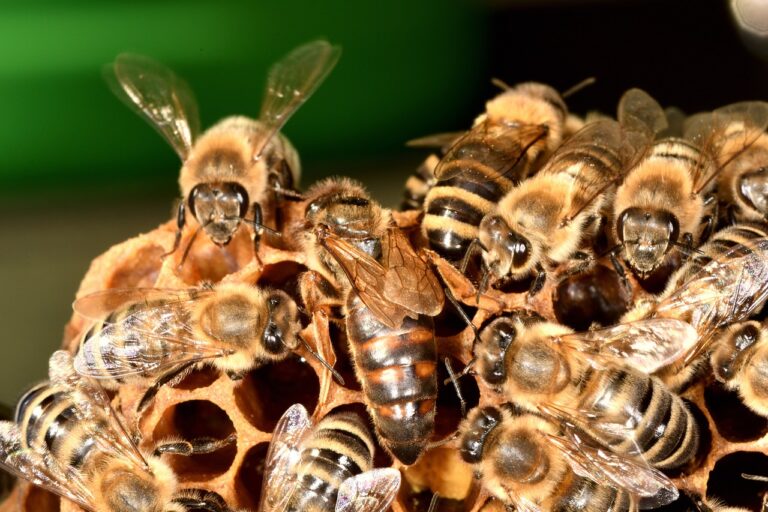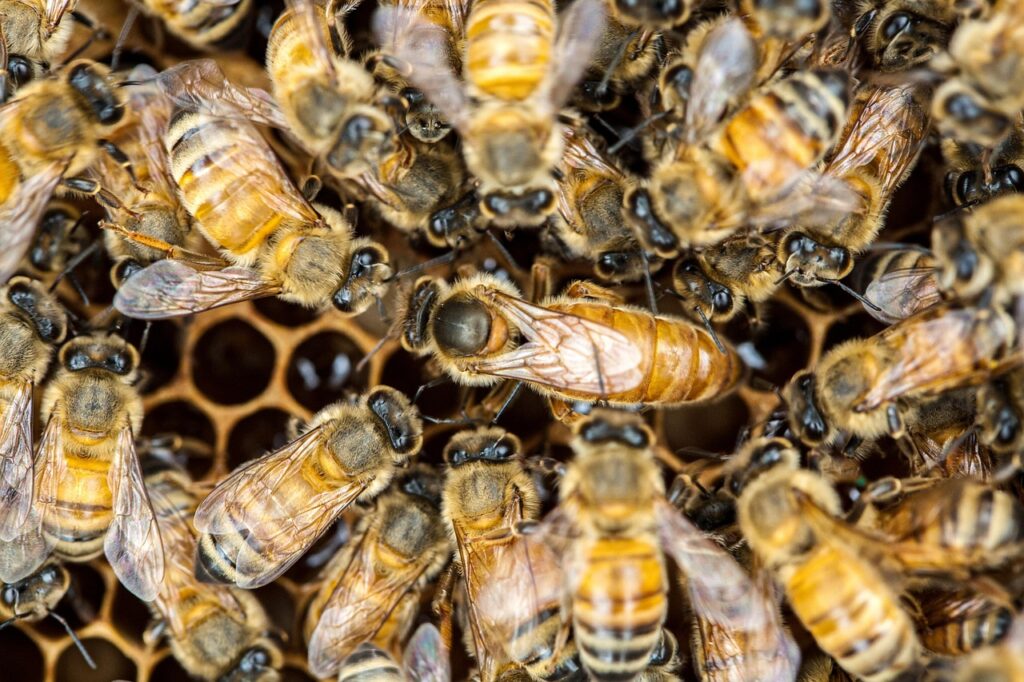Structure of a Bee Hive
The structure of a bee hive—whether built by bees in nature or designed by humans for beekeeping—is an engineering marvel optimized for the bees’ needs, efficient use of materials, climate control, and colony organization.
Natural Bee Hive Structure
In the wild, honey bees typically build their hives in sheltered places such as hollow trees, rock cavities, or occasionally hanging from sturdy branches.
The basic architectural unit is the honeycomb: a dense matrix of hexagonal wax cells, which maximize strength and storage capacity while minimizing the amount of beeswax required to construct them. Each hive usually contains several parallel sheets of comb hanging vertically[1][2][3].
Layout of a Natural Hive:
- Upper Comb: Honey storage cells, which are capped with wax to preserve the honey.
- Below the Honey: Pollen storage cells and worker brood cells for eggs and developing young.
- Lower Comb Edges: Drone brood cells (for male bees) and, at the comb’s very bottom, the occasional queen cell (larger, peanut-shaped).
- The bees maintain “bee space”—a narrow gap that allows them to move freely between combs[1][2].
Modern Beehive Design (Langstroth Hive)
The Langstroth hive is the most common managed beehive design, mimicking natural bee preferences with a system of stackable rectangular boxes (supers) and removable frames[4][5][6][7]. Its modularity helps beekeepers manage the hive, harvest honey, and inspect for health easily.
Main Components:
| Part | Function |
| Hive stand | Elevates the hive from the ground[5][6] |
| Bottom board | The hive’s floor; entrance for bees[4][6][7] |
| Entrance reducer | Controls the opening size for traffic/defense[6] |
| Hive body (Brood box) | Main colony living area, raising brood, storing pollen/honey[4][5][6][8][7] |
| Frames | Removable wooden/plastic frames for comb[4][9][10] |
| Supers | Additional boxes for surplus honey[11][6][7] |
| Queen excluder | Keeps queen out of honey supers[5] |
| Inner cover | Climate regulation, ventilation[4][7] |
| Outer cover (roof) | Weather protection, insulation[4][7] |
- Hive Bodies/Brood Boxes: Contain frames, where bees raise their brood and store essential food.
- Honey Supers: Added above the brood boxes to store extra honey, which may be harvested by beekeepers.
- Frames: Hang parallel inside boxes, supporting combs that bees build out with wax.
The Heart of the Hive: The Honeycomb
Whether wild or managed, the structured honeycomb system is universal. Hexagonal cells provide:
- Maximum strength and minimal wax use, covering area efficiently with shared walls.
- Multifunctional spaces: Egg-laying (brood rearing), pollen storage, honey storage—all organized for workflow and ease of colony movement[2][3].
Ventilation & Climate Control
Hives are designed, both by bees and beekeepers, for excellent airflow. Bees maintain a stable temperature (~95°F/35°C) via:
- Narrow passageways and “bee space” for airflow.
- Bees fanning wings for cooling and clustering for heat[3].
In summary:
A bee hive’s structure, whether natural or artificial, centers around vertical sheets of hexagonal honeycomb housed in a protective cavity or modular box. The interior is carefully organized for storing honey at the top, brood in the center, and pollen in between, with well-designed entrances, ventilation, and climate control engineered by bees themselves or enhanced by beekeepers[4][1][2][3][7].
⁂
- https://en.wikipedia.org/wiki/Beehive
- https://www.planetbee.org/post/buzz-worthy-architecture-how-honey-bees-build-their-hives
- https://millheimhoneycompany.com/blogs/news/the-amazing-engineering-of-beehives-natures-perfect-structure
- https://www.thisoldhouse.com/woodworking/23032293/building-a-beehive
- https://www.dadant.com/learn/beehive-components-part-i-building-a-hive-from-the-ground-up/
- https://www.rockyhedgefarm.com/parts-of-a-langstroth-beehive-structure/
- https://www.perfectbee.com/beekeeping-articles/langstroth-beehive-in-detail
- https://bee-health.extension.org/wooden-components-of-a-modern-bee-hive/
- https://www.perfectbee.com/beekeeping-articles/outside-the-swarm/what-is-the-right-type-of-beehive
- https://www.mdbka.com/hive-information/
- https://www.beverlybees.com/beginner-beekeepers-guide/parts-beehive-beginner-beekeeper/



